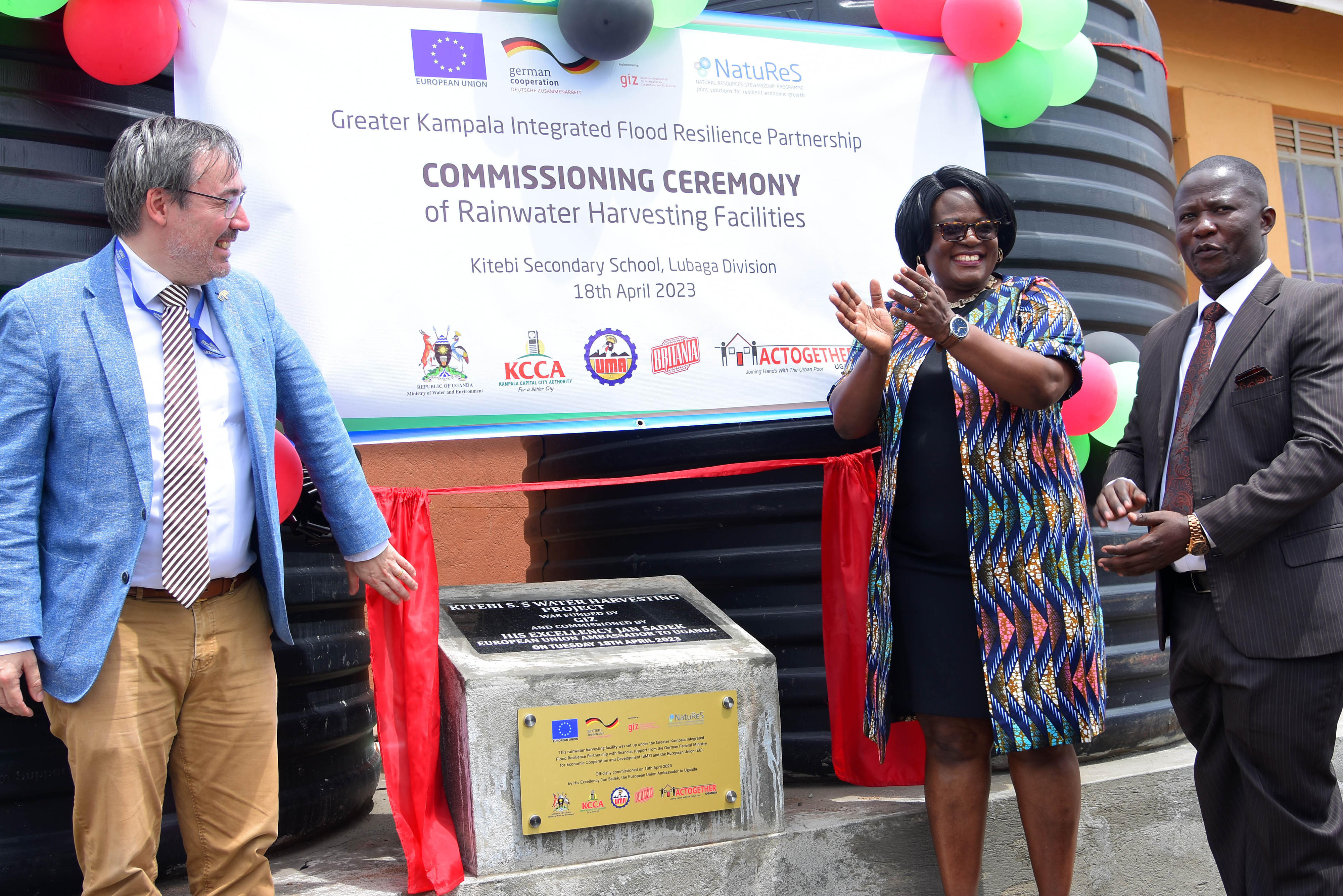Prime
Why rural areas still thirst for clean water

A man draws water from a well in Nyabubale Village, Kiko Town Council in Kabarole District in 2017. PHOTO/FILE
What you need to know:
- The delay has been attributed to factors including poor planning, delayed implementation, Covid-19 related disruptions, vandalism of water infrastructure, land acquisition delays, and budget cuts.
Poor planning, delayed implementation, and poor oversight have plagued government efforts to extend safe piped water to rural areas, with some projects stagnating for years, new audit findings reveal.
These loopholes, consequently cost the taxpayer over the initial costs with projects ballooning by up to 25 percent.
The details are contained in the value for money audit report.
According to the Auditor General, Mr John Muwanga, the Ministry of Water and Environment planned to target 70 percent of the people in rural areas within one kilometre by June 2022.
Six water projects with a total of 23 schemes were undertaken between financial years 2018/2019 to 2021/2022. Of these, the Audit found 11 (47.8 percent) were completed while 12 were either under construction or at procurement stage.
“Projects had extensions of up to three years, and these were bound to be further extended as at the time of the audit… Consequently, some schemes under the projects reported increase in variations and associated costs resulting from changes related to scope and design following long lapse times in start and implementing the scheme constructions,” the report states.
“There were variations in contract works and contract prices amounting to Shs14.358b,” the auditors reported.
The projects include support to rural water and sanitation, solar-powered mini-piped water schemes in rural areas, piped water in rural areas, integrated water resources Management and Development Project, Support to Rural Water Supply and Sanitation Project and Development of Solar Powered Irrigation and Water Supply Systems.
Poor budget performance also affected implementation. For example, of the Shs518.97b allocated for the projects during the period between 2018/19 and 2021/22, Shs332.7b was released while Shs299.67b was absorbed.
The audit also reveals limited functionality on some schemes, which resulted from inadequacies in the maintenance and repairs of the schemes. This was attributed to limitations in revenue collection, inadequate actual water connections in relation to the planned targets, vandalism of water system infrastructure, and affordability of the water services by the communities.
In the report, Mr Muwanga, notes that the country’s quest to provide quality and safe water remains an uphill task with Seven million Ugandans lacking access by 2021.
He reports that national safe water coverage was estimated at 74 percent with 69 percent water access in rural areas. Currently, Uganda has 135,774 domestic water points, which serve a total of 28.2 million (63 percent) people. 23.1 million (82 percent) are in rural areas.
However, 5,312 sources have been non-functional for more than five years and are considered abandoned.
“This limitation exposes the communities to unclean water sources which may lead to occurrence of water-borne diseases, time wastage while collecting water from a distant water source, decreased opportunity to engage in income generating activities, and increased school absenteeism, among others,” he says.
Poor planning
The report states that officials at the ministry were unable to avail planning documents for some projects.
Poor planning was further revealed through the variance in the number of target beneficiaries, for example the Bukedea GFS scheme targeted 262,343 but had 60,624 actual beneficiaries, Rwebisengo -Kanara GFS Phase I had 29,520 actual beneficiaries compared 54,425 targeted. Other schemes did not indicate the number of actual beneficiaries.
“This further indicates that there were no project re-appraisal plans undertaken by management to validate the targets… A review of a sample scheme documentation revealed that there were variances of up to 400 percent between the planned target and actual target beneficiaries,” the report notes.
It adds: “Analyzed data indicates that the anticipated population of the area to be served by the schemes was not adequately estimated. Higher number of beneficiaries than the targeted number results in rationing of water and an underserved population”.
The ministry attributed the variance to the long time lines between the project approval dates and actual implementation start dates.
Ministry response
According to the report, the management attributed the below par performance to a stagnant budget, and Covid-19 effects which led to a sharp increase in prices of construction materials and commodities in general. It was noted that the new contracts for rural water supply systems were now 50 percent higher than before the pandemic. This was occassioned by the high increase in the cost of cement, water pipes, steel reservoir tanks and labour.
Other challenges affecting performance of rural water piped water schemes include delays in land acquisition, budget cuts, delayed release of funds, vandalism of water infrastructure, and the effects of Covid-19 lockdown.
Access to safe rural water stagnated at 68 percent for three out of the four years under review ended June 30, 2022. The stagnation was attributed to the growing population and the inability to provide infrastructure to meet the demand.
The vision
According to the Uganda Vision 2040, the percentage population with access to safe piped water as indicated in the baseline status stood at 15 percent in 2010, and a target of 80 percent has been set by the end 2040.
The third National Development Plan (NDP III) proposes an increased access to safe water supply from 70 percent to 85 percent in rural areas.




